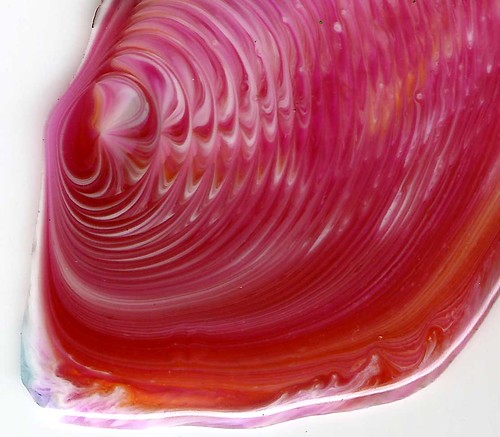
I guess I am a Rheologist. I just didn't know this fancy terminology to call myself. I've spent quite a bit of time messing with a viscus material which viscosity changes over time. I've watched it slide, flow, drip, and I got good at it. I am a Rheologist.
I am also an artist who makes a maximum use of optical illusion to make a 2-dimensional objects look like 3-D or even make it look like moving. But I didn't realize I was doing just that with my epoxy resin work until a puzzled Rheologist contacted me.
This image below completely "fooled" polymer scientists who are not actually fool at all (read it here). They found my blog entry and thought there were wrinkles on the drop.
If you have used epoxy resin, you know this thing is self-leveling even in a very viscous state. Epoxy resin is extremely faithful to the gravitational force and wants to be flat very, very much. What appear to be wrinkles are optical illusions of stripes with different colors. There are NO wrinkles in physical sense.
Frankly, looking at those images, I myself find it very hard to believe that these are actually flat even though I KNOW they are flat.
In some disciplines of science and medicine, specialists can understand a lot of things by visual inspections alone. And this is a good example of such a competence in Science. The Rheologists knew the formation of wrinkles was impossible, by only looking at the image on a computer screen, and had to ask me how I performed the impossible.
Here is the image that looks so 3-D that it fooled Rheologists at Aspen Research Corporation.
